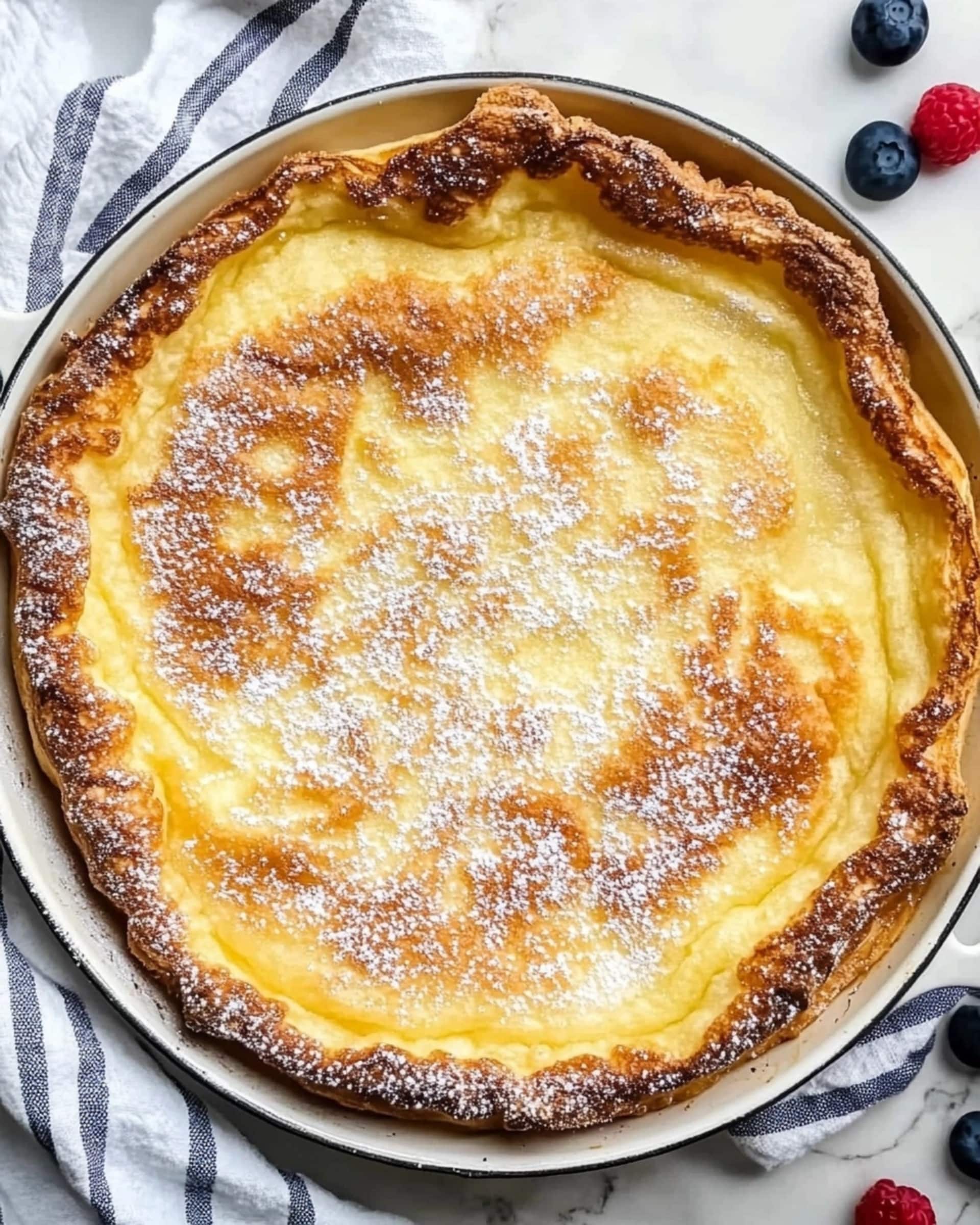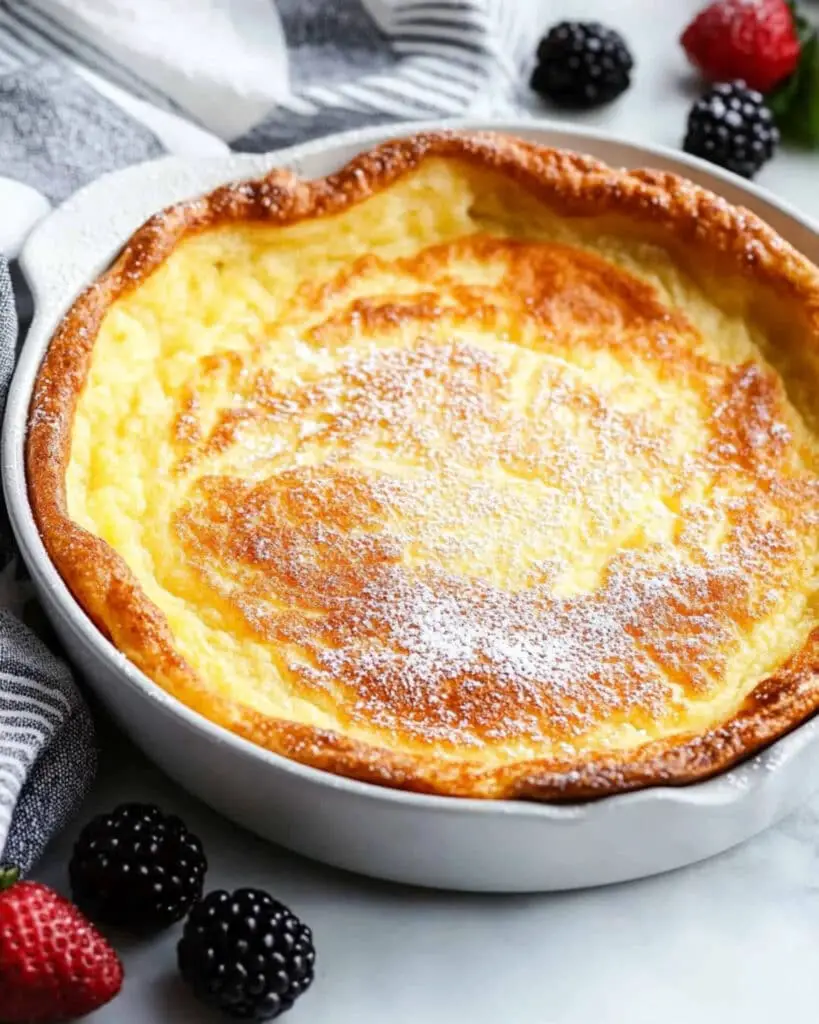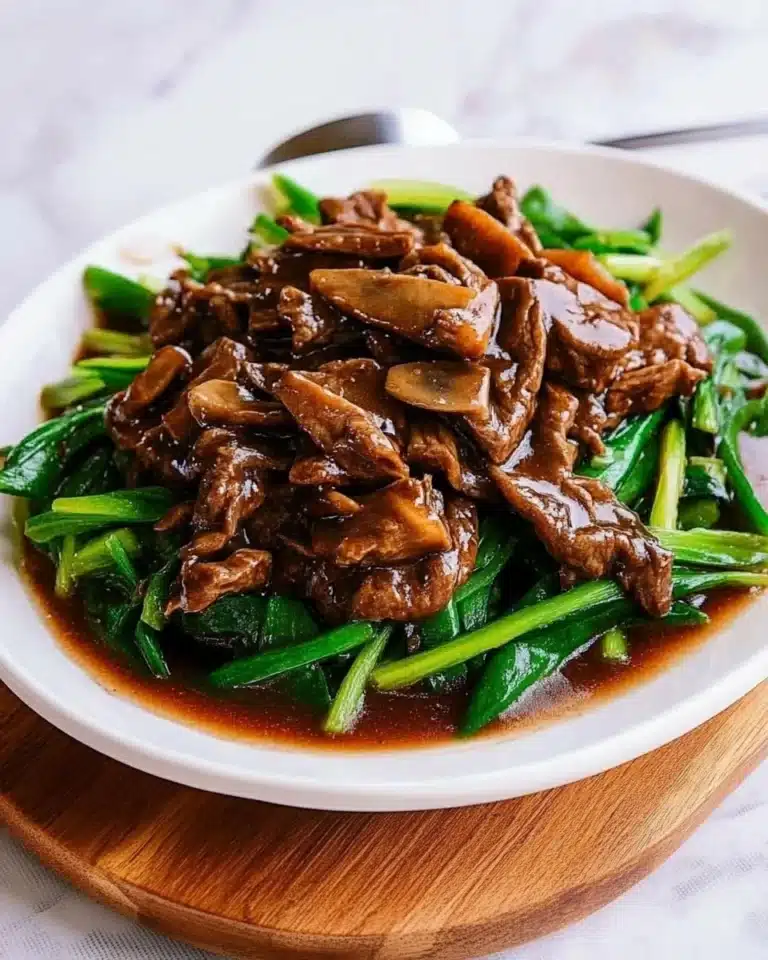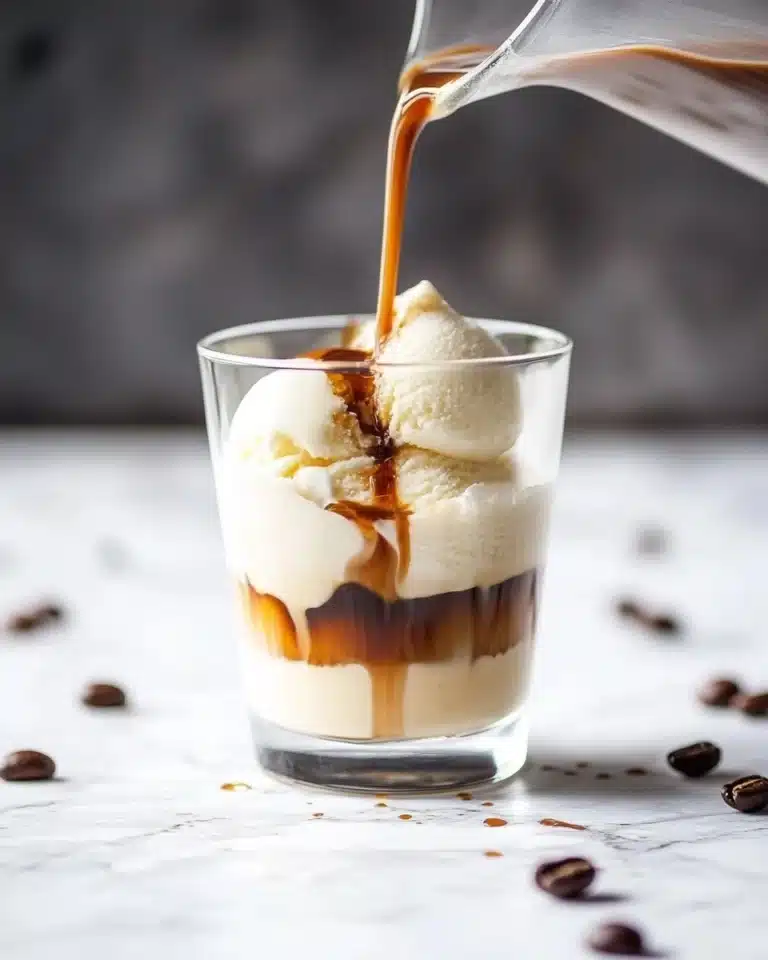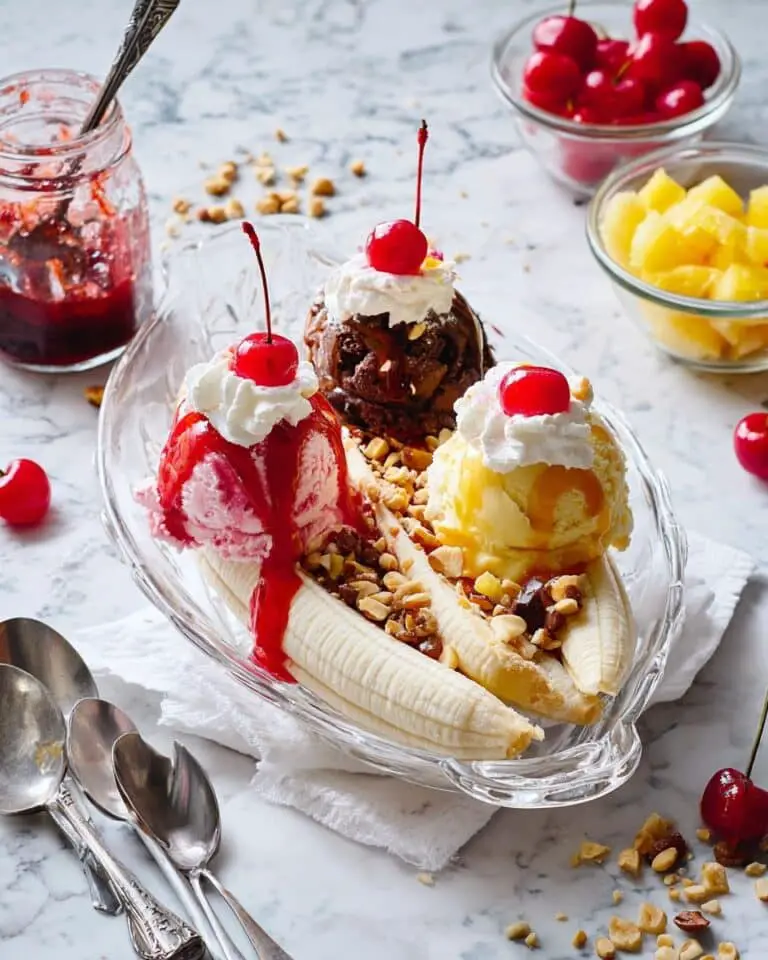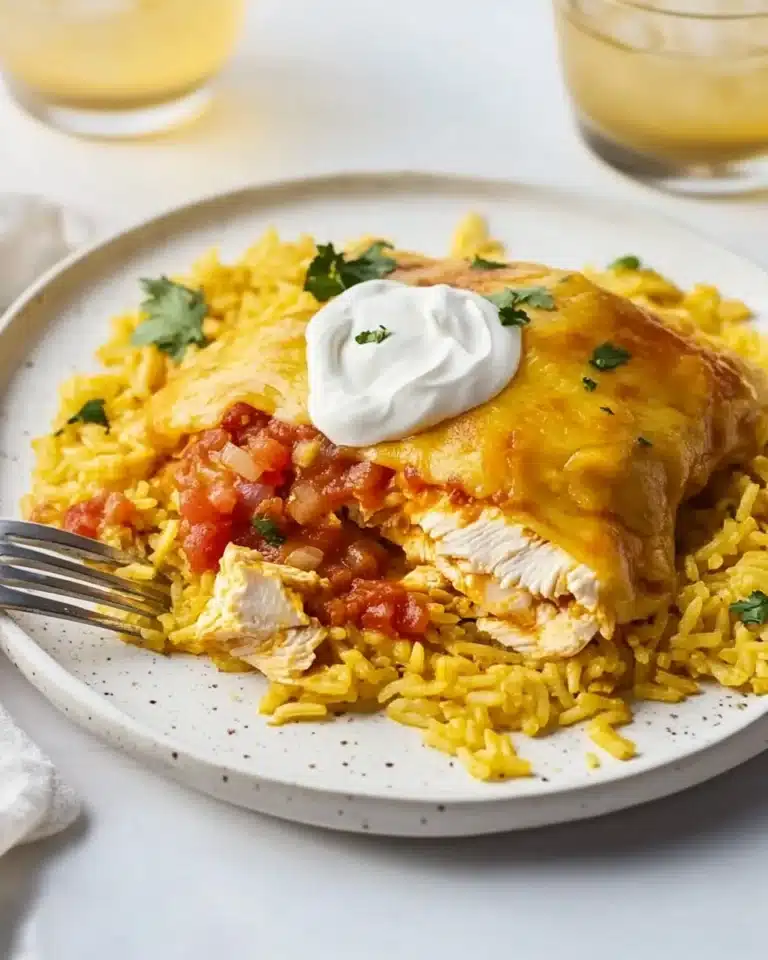Get ready to fall in love with a classic breakfast that turns even the most ordinary weekday morning into something delightfully special. German Pancakes—sometimes called Dutch Babies—bring together simple ingredients in a way that feels almost magical. In just about 35 minutes, you’ll have a golden, puffed-up pancake that’s crispy around the edges, custardy in the center, and absolutely irresistible. Think of this as your go-to recipe for mornings when you want something impressive but don’t have time to stand over the stove flipping individual pancakes!
Why You’ll Love This Recipe
- Super Fast and Effortless: Toss everything in a blender, pour it into a hot skillet, and let your oven do all the work! You can actually have coffee and read the news while breakfast makes itself.
- Universally Crowd-Pleasant: There’s something so inviting about a pancake you slice like cake. These are guaranteed to surprise and delight both family and friends.
- Rich and Satisfying Flavors: The eggs and butter create a slightly sweet, custardy center, while the edges puff up to crispy, buttery perfection.
- Minimal Cleanup: Besides your blender and skillet, there’s hardly a mess to deal with—a huge win for busy mornings!
- Customizable: Serve as is or let everyone top their slice just the way they like.
Ingredients You’ll Need
Here’s what you’ll need, plus why you need it (and a few little tips along the way):
- Salted Butter: For that rich, nutty flavor and to keep the pancake from sticking. The butter also crisps up the edges beautifully.
- Large Eggs: The backbone of the batter, giving a luxurious, almost soufflé-like rise and a silky center.
- Milk (Whole or 2%): Adds creaminess and helps achieve that perfect custard texture. Whole milk gives the pancake extra richness.
- All-Purpose Flour: The structure that lets the pancake puff up dramatically in the oven.
- Granulated Sugar: Just the right hint of sweetness, balancing the eggs and butter.
- Vanilla Extract: It might seem like a small touch, but it adds warmth and depth to the final dish.
- Salt: Essential for enhancing all the other flavors, don’t skip it!
Note: You’ll find the complete list of ingredients, along with their exact measurements, in the printable recipe card at the bottom of this post.
Variations
Feel like mixing it up? Here are a few ideas:
- Fruit-Loaded: Drop fresh sliced apples, berries, or peaches into the pan just before pouring in the batter. The fruit caramelizes beautifully.
- Chocolate Upgrade: Sprinkle a handful of chocolate chips or cocoa powder into the batter for a dessert-like version.
- Cinnamon Swirl: Whisk a little ground cinnamon and nutmeg into the batter for cozy, warming flavors.
- Savory Twist: Skip the sugar and vanilla, and top with crisp bacon, sautéed mushrooms, or fresh herbs and cheese once baked.
- Gluten-Free: Swap in a trusted gluten-free flour blend for the all-purpose flour—just keep an eye on the texture.
How to Make German Pancakes
Step 1: Prep the Skillet
Place a 12-inch oven-safe skillet on a baking sheet and toss in your salted butter. Transfer both to the oven and begin preheating to 400°F (200°C). This step infuses every nook and cranny of the pan with butter, key for those gorgeous crisp edges.
Step 2: Blend the Batter
While the oven works its magic, add your eggs, milk, flour, sugar, vanilla extract, and salt to a blender. Blend on low to medium speed until you have a smooth, frothy batter—2 minutes is perfect. If any flour sticks to the sides, scrape it down and blend again.
Step 3: Butter, Meet Batter
When the butter is fully melted and beginning to brown, carefully swirl the skillet so the butter coats both the base and sides. This creates a nonstick shield and delivers major flavor.
Step 4: Pour and Bake
Pour your batter straight from the blender into the hot pan. Next, place it back in the oven (lower-middle rack is best—these pancakes really rise!). Bake for 18–20 minutes or until it’s puffed dramatically and deeply golden at the edges.
Step 5: Serve Straight Away
German Pancakes are at their best the second they come out of the oven, still towering and warm. Slice and top with powdered sugar, maple syrup, fresh fruit, or a squeeze of lemon—whatever makes you smile.
Pro Tips for Making the Recipe
- Oven Position Matters: Use the lower-middle oven rack. The pancake puffs quite a bit and you don’t want it getting too close to the top heating element (or it might burn rather than brown).
- Preheat Thoroughly: Let your skillet and oven come to full temperature first. A hot pan is the secret to those crisp, high sides.
- Blender is Best: For the fluffiest, lump-free batter, always use a blender instead of mixing by hand.
- Serve Immediately: The pancake will deflate slightly as it cools—that’s normal! Still, nothing beats the wow factor of serving it fresh from the oven, all puffed and golden.
- Don’t Be Shy with Butter: Butter is your friend here—it prevents sticking and gives unmatched flavor.
How to Serve
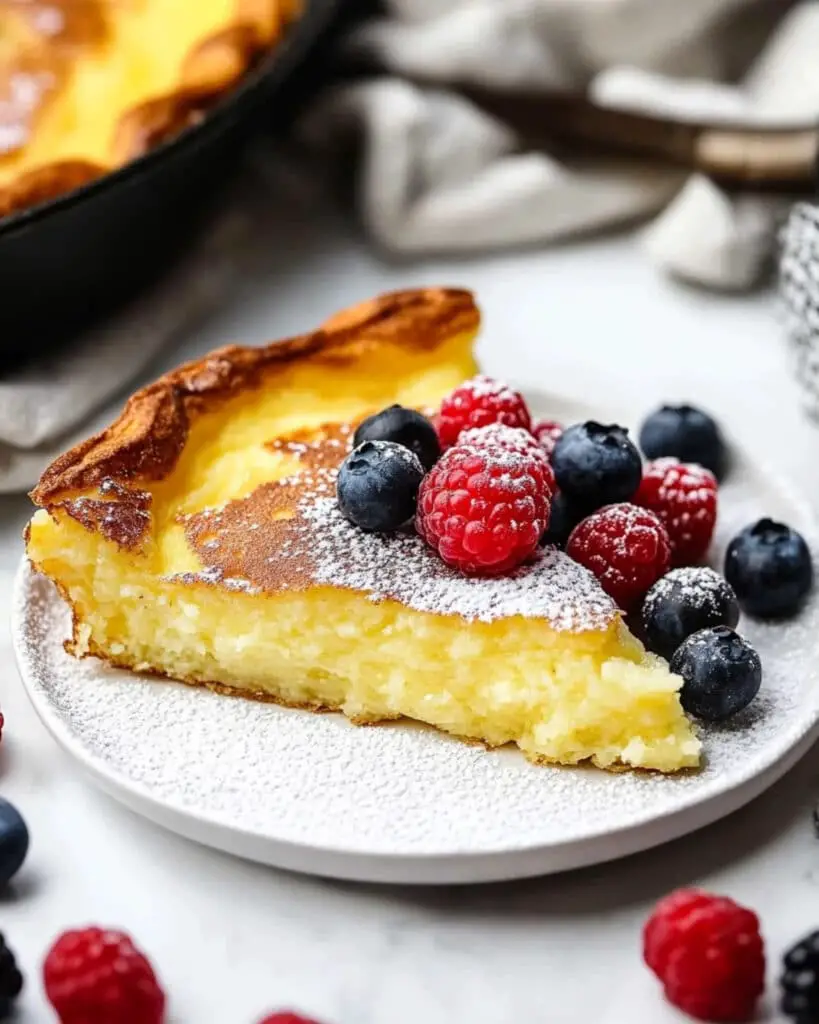
German Pancakes are all about versatility! Here are some delicious ways to serve and pair:
- Traditional: A dusting of powdered sugar and a generous drizzle of real maple syrup—simple, classic, and always a hit.
- Fruity: Top with lemon wedges and berries for a bright, tangy finish.
- Dessert-Style: Spoon over cooked apples with a sprinkle of cinnamon for a cozy, fall-inspired treat.
- With Savory Sides: Pair with crispy bacon, sausage, or even a simple green salad for a brunch-worthy spread.
- Make a Pancake Bar: Set out toppings—whipped cream, nuts, chocolate sauce, jams—and let everyone dress up their own slice.
Make Ahead and Storage
Storing Leftovers
If you happen to have leftovers (highly unlikely!), let the pancake cool, then cover and refrigerate. It keeps well in an airtight container for up to 2 days.
Freezing
German Pancakes freeze surprisingly well. Let them cool, then wrap individual slices tightly in plastic wrap or foil and pop them in a freezer-safe bag. They’ll keep for up to a month.
Reheating
To reheat, warm slices in a 300°F oven until hot, or give them a quick zap in the microwave. The texture is best from the oven, but both ways work for busy mornings!
FAQs
-
Can I use a different type of milk?
Yes—while whole or 2% milk gives the richest results, you can swap in non-dairy milks like almond or oat milk if needed. The flavor will be slightly different, but still delicious.
-
Do I have to use a cast iron skillet?
A heavy, oven-safe skillet (like cast iron) is ideal for that signature puff. If you don’t have one, use a 9×13-inch glass baking dish—just watch the bake time as it may vary.
-
Why did my pancake deflate?
Completely normal! German Pancakes are at their loftiest just out of the oven and settle as they cool. The airy rise comes from the eggs; as they cool, the steam escapes and it flattens.
-
Can I double the recipe for a crowd?
Certainly! If you have a larger pan or two skillets, you can easily double up. Just make sure not to overcrowd the oven so hot air can circulate and puff up every pancake.
Final Thoughts
German Pancakes are pure breakfast joy: easy, quick, utterly satisfying, and endlessly adaptable. They’re proof that a handful of pantry staples can transform into something truly special with a little heat and care. Give this recipe a try, and enjoy not only the eating but the wonderful, fragrant ritual of bringing a golden, puffed wonder to your table. Happy cooking!
Print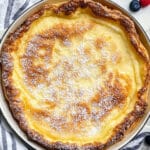
German Pancakes Recipe
- Prep Time: 10 minutes
- Cook Time: 25 minutes
- Total Time: 35 minutes
- Yield: 4 servings
- Category: Breakfast
- Method: Baking
- Cuisine: German
- Diet: Vegetarian
Description
German Pancakes are a deliciously light and fluffy oven-baked treat, also known as Dutch Babies. Made with a simple batter of eggs, milk, and flour, these pancakes puff up dramatically in the oven, creating golden, crispy edges with a custardy center. Perfect for breakfast, brunch, or dessert, they’re easy to make and irresistibly tasty with your favorite toppings like powdered sugar or maple syrup.
Ingredients
Batter
- 6 large eggs
- 1 1/2 cups milk (whole or 2%)
- 1 1/2 cups all-purpose flour
- 1/4 cup granulated sugar
- 1 teaspoon vanilla extract
- 1/2 teaspoon salt
For the Pan
- 6 tablespoons salted butter
For Serving (Optional)
- Powdered sugar
- Maple syrup
Instructions
- Preheat the Skillet and Melt Butter – Place a 12-inch oven-safe skillet on a baking sheet and add 6 tablespoons of salted butter to the skillet. Transfer to the oven and heat to 400°F (200°C) while you prepare the batter. The butter should melt and become lightly browned, which adds extra flavor to the finished pancake.
- Prepare the Batter – In a blender, combine 6 large eggs, 1 1/2 cups milk, 1 1/2 cups all-purpose flour, 1/4 cup granulated sugar, 1 teaspoon vanilla extract, and 1/2 teaspoon salt. Blend on low to medium speed until the mixture is frothy, about 2 minutes. Stop to scrape down the sides, ensuring the flour is fully incorporated.
- Pour the Batter and Bake – Once the butter is fully melted and slightly browned, carefully swirl the hot skillet to coat the bottom and sides with butter. Pour the prepared batter directly into the hot skillet. Return the skillet to the oven.
- Bake Until Puffy and Golden – Bake for 18–20 minutes, or until the German pancake is dramatically puffed and golden brown around the edges. The pancake will deflate slightly as it cools, which is normal.
- Serve – Remove from the oven and serve immediately. Optionally, dust with powdered sugar or drizzle with maple syrup for extra flavor. Slice and enjoy while warm!
Notes
- Make sure the oven rack is positioned on the lower half (but not the bottom) to allow the pancake plenty of space to puff up.
- Be cautious when swirling the hot skillet; always use oven mitts to protect your hands.
- German pancakes deflate quickly, so serve immediately for the best presentation and taste.
Nutrition
- Serving Size: 1 slice
- Calories: 521 kcal
- Sugar: 17 g
- Sodium: 555 mg
- Fat: 27 g
- Saturated Fat: 15 g
- Unsaturated Fat: 9 g
- Trans Fat: 1 g
- Carbohydrates: 53 g
- Fiber: 1 g
- Protein: 16 g
- Cholesterol: 302 mg

